This page is not compatible with Internet Explorer.
For security reasons, we recommend that you use an up-to-date browser, such as Microsoft Edge, Google Chrome, Safari, or Mozilla Firefox.
VGMETROLOGY
Maximum Precision, Minimal CT Data Set Sizes
The Universal Metrology Solution
VGMETROLOGY is made for metrologists. Our universal metrology solution turns your computed tomography (CT) scanner into a comprehensive and precise metrology device.
VGMETROLOGY
- Full-featured. VGMETROLOGY offers you the full metrology-related functionality of VGSTUDIO MAX including GD&T functionality.
- Uncompromisingly accurate. VGMETROLOGY gives you the complete picture of all object surfaces — and saves it in the very compact .mvgl format.
- Universal. VGMETROLOGY works natively on voxel, point cloud, mesh, and CAD data.
- Easy-to-use. The focused range of functionality makes VGMETROLOGY easily accessible for new users.
- Efficient. Powerful automation functions speed up your work when dealing with repetitive tasks and analyzing periodic structures.
- Seamless. You can exchange files between VGMETROLOGY and other Volume Graphics products.
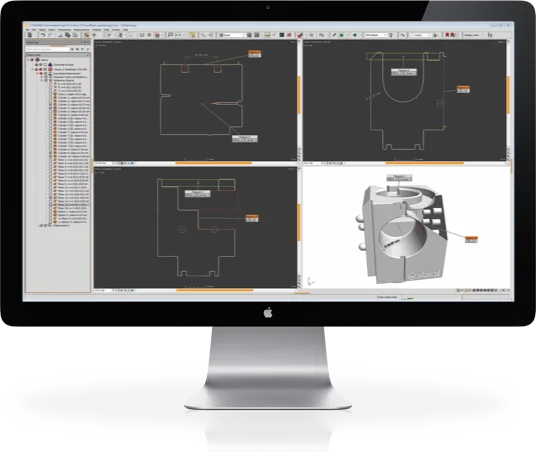
Full-featured but nonetheless easy-to-use – VGMETROLOGY is made for metrologists.
The Volume Graphics Metrology Kernel in VGMETROLOGY has been tested by the national institutes PTB (Physikalisch-Technische Bundesanstalt) and NIST (National Institute of Standards and Technology).*
* PTB and NIST verified: This software contains the Volume Graphics Metrology Kernel VGMK 2023.1.0 which passed the PTB test for “Evaluation software based on minimum-zone method for coordinate measuring machines” and the PTB test for “Evaluation software based on least-squares method for coordinate measuring machines” and which was verified by the NIST “Algorithm Testing and Evaluation Program for Coordinate Measuring Systems”. The test results were obtained under Windows (64 bit).
In contrast to tactile and optical methods, industrial CT holistically scans all surfaces of an object, even if they are inside your part or difficult to capture.
CT is the ideal basis for metrology applications. While tactile coordinate measurement methods are also non-destructive, CT is also non-intrusive. This means measuring with CT doesn’t deform the part. And unlike optical methods, CT still works accurately even if the part reflects or is translucent.
A .mvgl file contains the best possible object surface without any loss in quality.
At the same time, a .mvgl file is smaller than a .stl file with comparable precision. But unlike the .stl format, a .mvgl file is small because it only contains the surface of the object. In a .stl file, a polygon mesh approximately describes the surface of the object. The smaller the .stl file, the less accurate the mesh.
A .mvgl file contains surfaces determined with subvoxel accuracy. To achieve subvoxel accuracy, VGMETROLOGY processes the gray values of individual voxels in a way which makes even those details visible that are smaller than a voxel.*
Our .mvgl format packs everything metrologists need into one compact, easy-to-handle file. This is especially handy when exchanging metrology data sets over the Internet.
*VGMETROLOGY ES and VGMetrology VIEWER can work with subvoxel-accurate surfaces, but don’t offer surface determination.
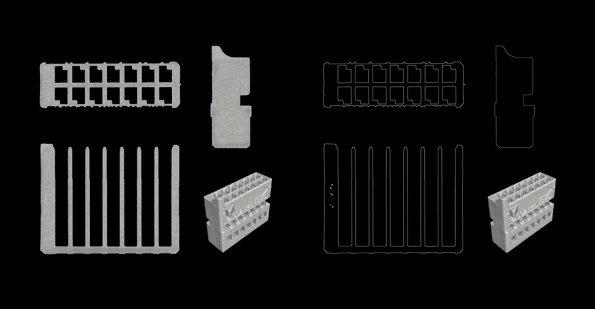
Left: conventional CT data, right: VGMETROLOGY data
- Works natively with point clouds and meshes created by tactile and optical scanners in addition to voxel data
- Loads CAD models in formats such as CATIA V5, Creo, Pro/ENGINEER – in addition to the import of STEP and IGES formats *
- Automatically translates and intelligently evaluates additional part information that is stored in Product and Manufacturing Information (PMI), e.g., dimensioning, GD&T, layers, annotations, or captions **
- Imports point clouds in ASCII files, .csv files, and plain text files
- Supports mesh files in the .stl format, both ASCII-coded as well as binary-coded
- Reduces measurement uncertainty because geometry object fitting is optimized for each supported data type (voxel, CAD, mesh, and point cloud data)
- Imports textured meshes and colored point clouds for a more meaningful documentation and visual analysis of objects
* Optional add-on module for a fee. Supported CAD formats of the CAD Import Module: CATIA V4 (up to 4.2.5), CATIA V5 (up to V5 6R2023), JT (up to 10.9), Unigraphics/NX (Unigraphics 11 to NX2406), Creo (up to 10.0), SolidWorks (97 to 2023). In beta status: Solid Edge (V19 to 2023). CAD translation technology supplied by Tech Soft 3D.
** Optional add-on module for a fee. PMI import is supported for CATIA V5 and Creo. In beta status also for Pro/ENGINEER and Unigraphics/NX. CAD translation technology supplied by Tech Soft 3D
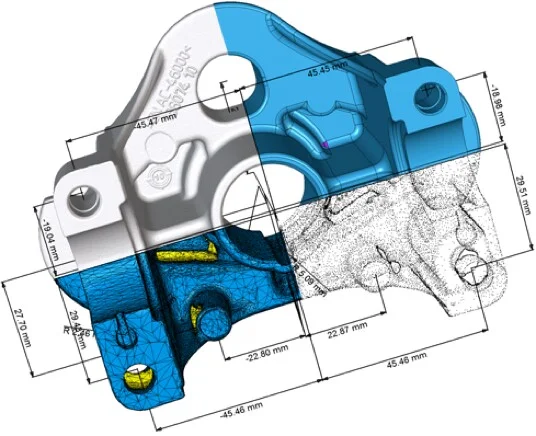
No matter the format, VGMETROLOGY can handle it. From top left to bottom right: voxel, CAD, mesh, and point cloud data.
- GD&T functionality (based on DIN EN ISO 1101)
- Object registration by Best-fit, 3-2-1, RPS, sequential, or feature-based method
- Storage of different registrations of an object to easily switch between them; measurements are updating accordingly
- Intuitive sequential alignment to register two objects against each other based on corresponding pairs of geometry elements
- Automatic selection of the type of geometry element to be fitted
- Automated generation of datum systems
- Creation of common datums
- Nominal/actual comparisons on CAD, mesh (.stl), and voxel data, including on Regions of Interest (ROIs)
- Wall thickness analyses both for near parallel surfaces (using the ray method) and for curved or branching surfaces (using the sphere method)
- Extensive reporting functions
- Automated analysis of single data sets or a group of data sets with macros and templates
- Automated replication of measurement plans across periodic structures
- Correct tools for injection molding or casting and 3D printing geometries in a seamless digital workflow with a lower number of iterations – keeping the quality up and the time to market short.
- Processes voxel, .stl, and CAD data together in one software.
- Calculates changes to injection molds, punching tools, or geometries of 3D printed parts based on scans of your sample part.
- Provides a color-coded visualization that shows you at a glance any deviations of the manufactured part from the target model, including curvatures and undercuts.
- Uses scan data of the part to quickly and easily generate correction areas in CAD format to adapt the part and the tool shape.
- Exports information about the newly calculated surfaces directly as CAD faces.
Read more about the Manufacturing Geometry Correction Module!
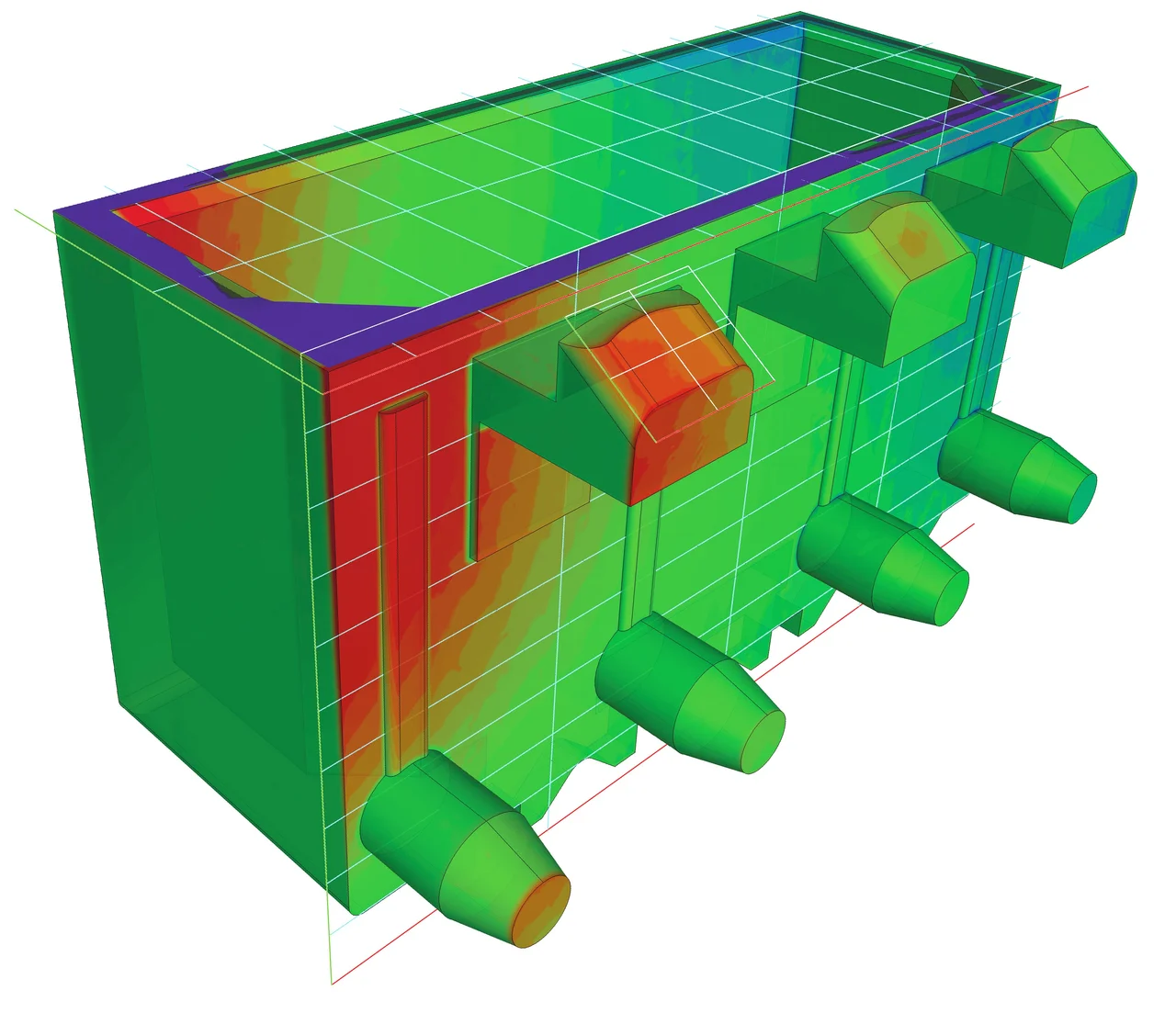
Three Editions
VGMETROLOGY comes in three editions: A stand-alone edition with built-in surface determination, an essential edition VGMETROLOGY ES, which can open .vgl and .mvgl with already determined surfaces, and a viewer edition VGMETROLOGY VIEWER.
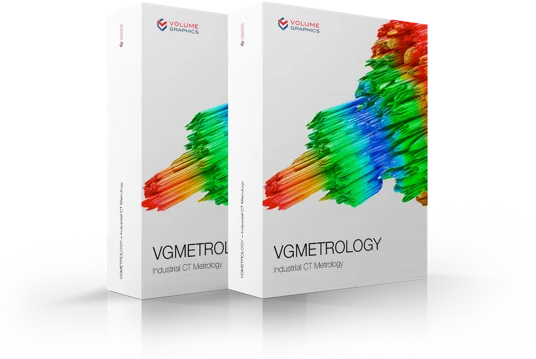
Keyword: .mvgl
The ".mvgl" file format packs everything metrologists need into one compact, easy-to-handle file. This file contains the best possible object surface without any loss in quality.